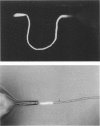Abstract
The pre-steady-state kinetics of the vasopressin-induced increase in collecting tubule osmotic water permeability (Pf) has been measured by a new fluorescence technique. Isolated cortical collecting tubules (CCT) from rabbit kidney were perfused with physiological buffers containing the impermeant fluorophores fluorescein sulfonate (FS) and pyrenetetrasulfonic acid (PTSA). Tubules were subject to a 120 mOsm bath-to-lumen osmotic gradient in the presence and absence of 250 microU/ml vasopressin. The magnitude of transepithelial volume flow was determined from the self-quenching of FS, or from the ratio of PTSA/FS fluorescence, measured at 380 nm excitation and 420 +/- 10 nm (PTSA) and greater than 530 nm (FS) emission wavelengths. Pf was calculated from the magnitude of transepithelial volume flow, lumen and bath osmolarities, lumen perfusion rate, and tubule geometry. The instrument response time for a change in bath osmolality was less than 3 s. At 37 degrees C, CCT Pf was (in units of cm/s x 10(4] 13 +/- 2 (mean +/- SE, 16 tubules) before, and 227 +/- 10 after addition of vasopressin to the bath. CCT Pf began to increase in 23 +/- 3 s after vasopressin addition and was half-maximal after 186 +/- 20 s. At 23 degrees C, Pf was 9 +/- 1 (seven tubules) before, and 189 +/- 12 after vasopressin addition. Pf began to increase in 40 +/- 4 s and was half-maximal after 195 +/- 35 s. After vasopressin removal from the bath, Pf decreased to its baseline value with a half-time of 14 min. These results establish a direct fluorescence method to monitor instantaneous transepithelial Pf in perfused tubules and show a very fast stimulation of CCT Pf in response to vasopressin.
Full text
PDF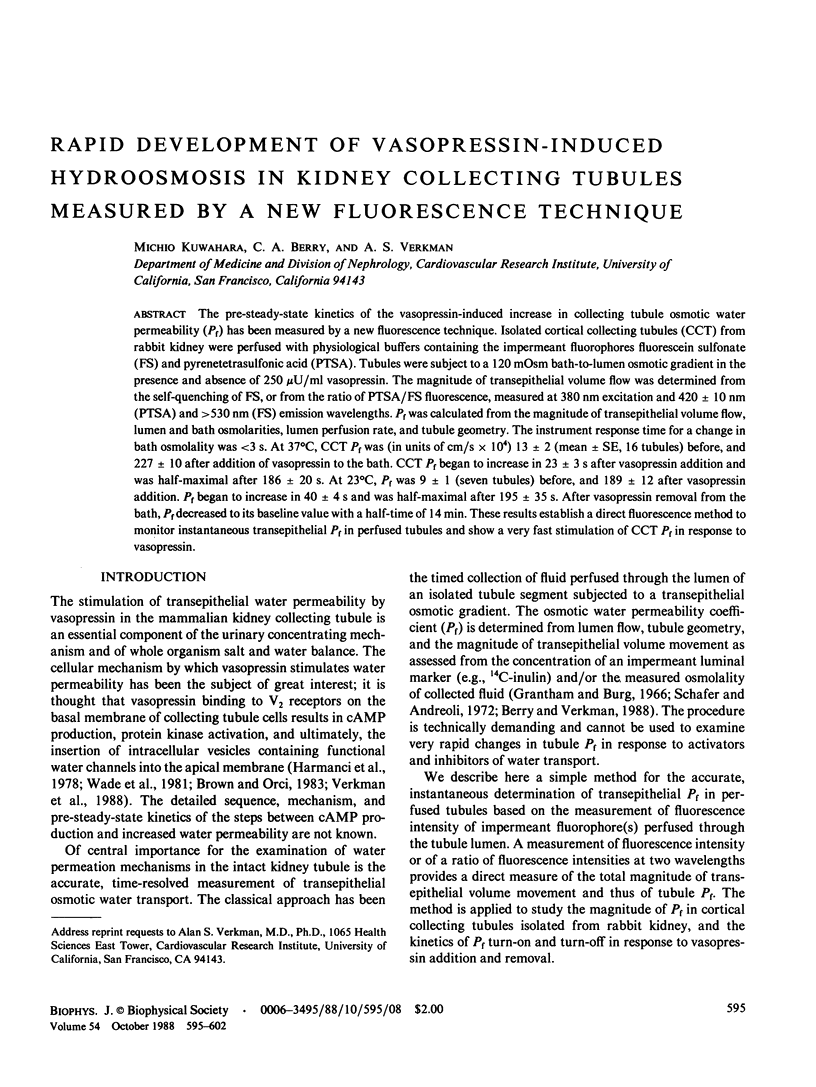
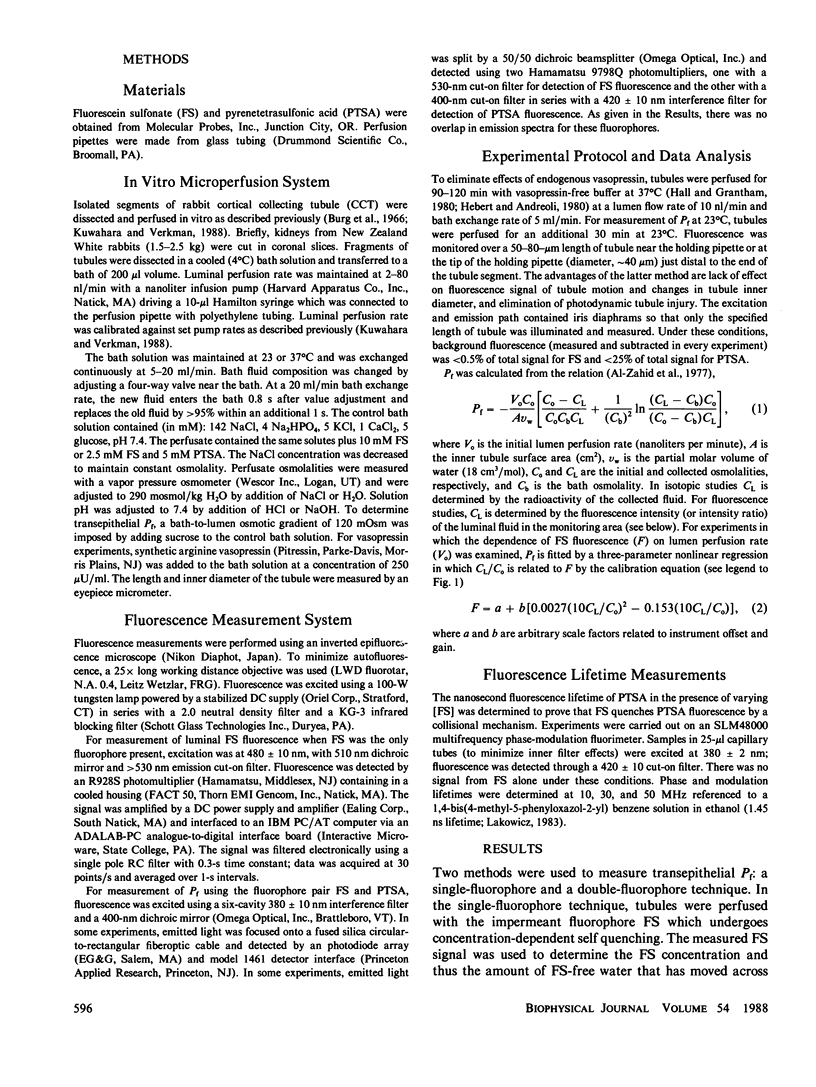
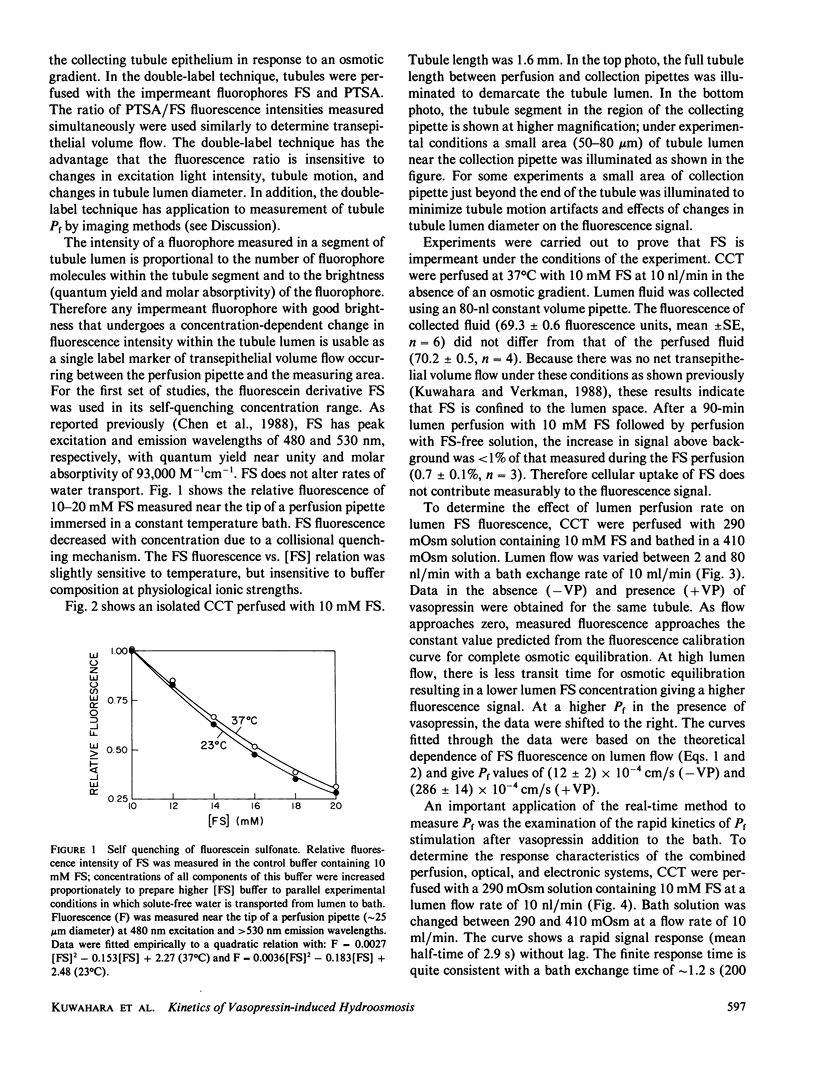
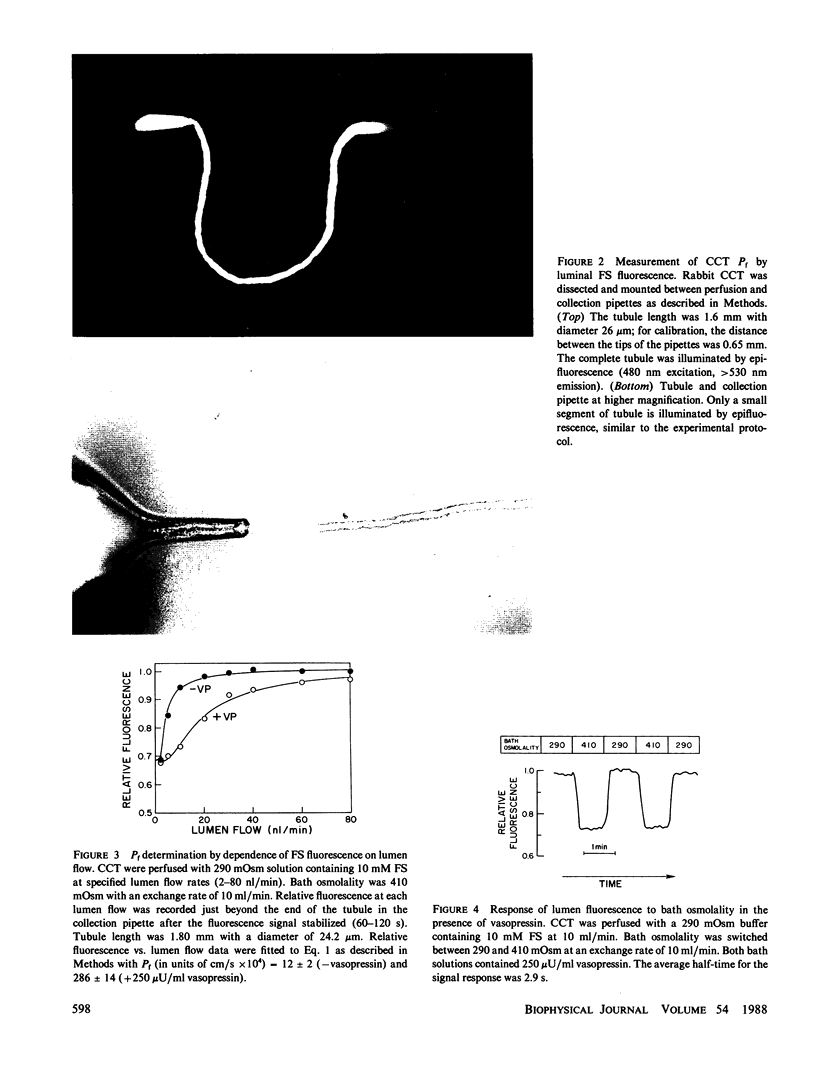
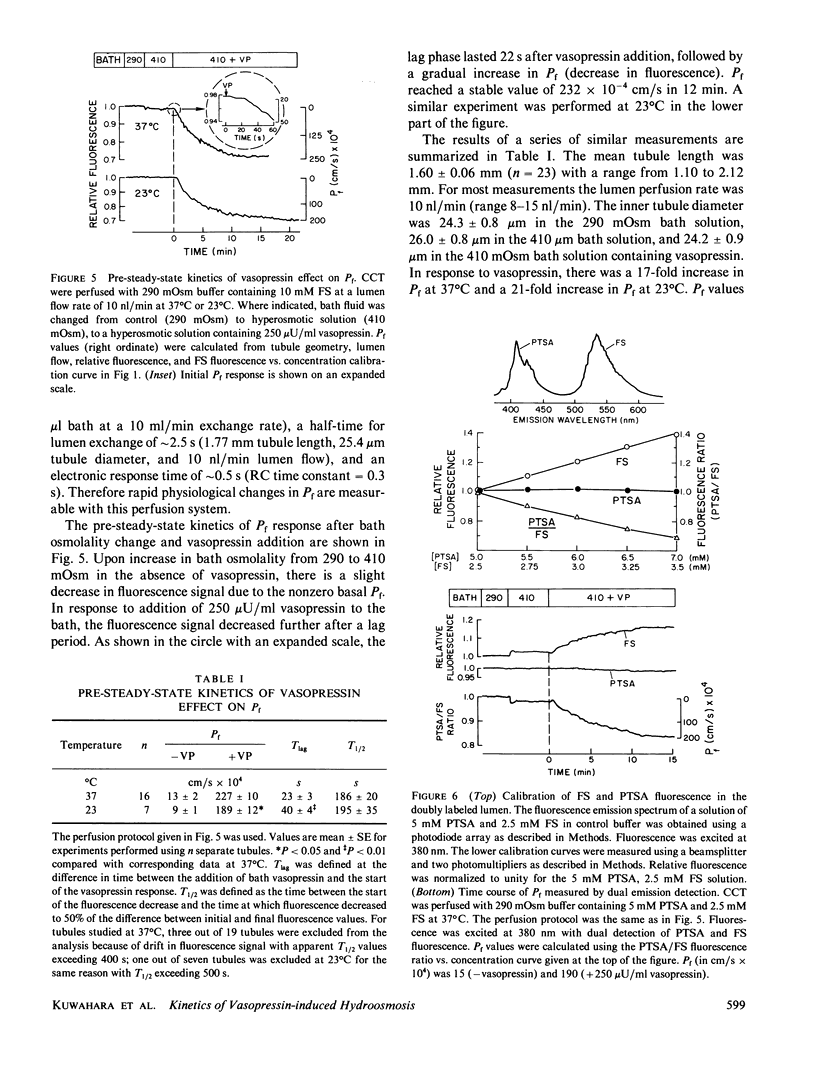
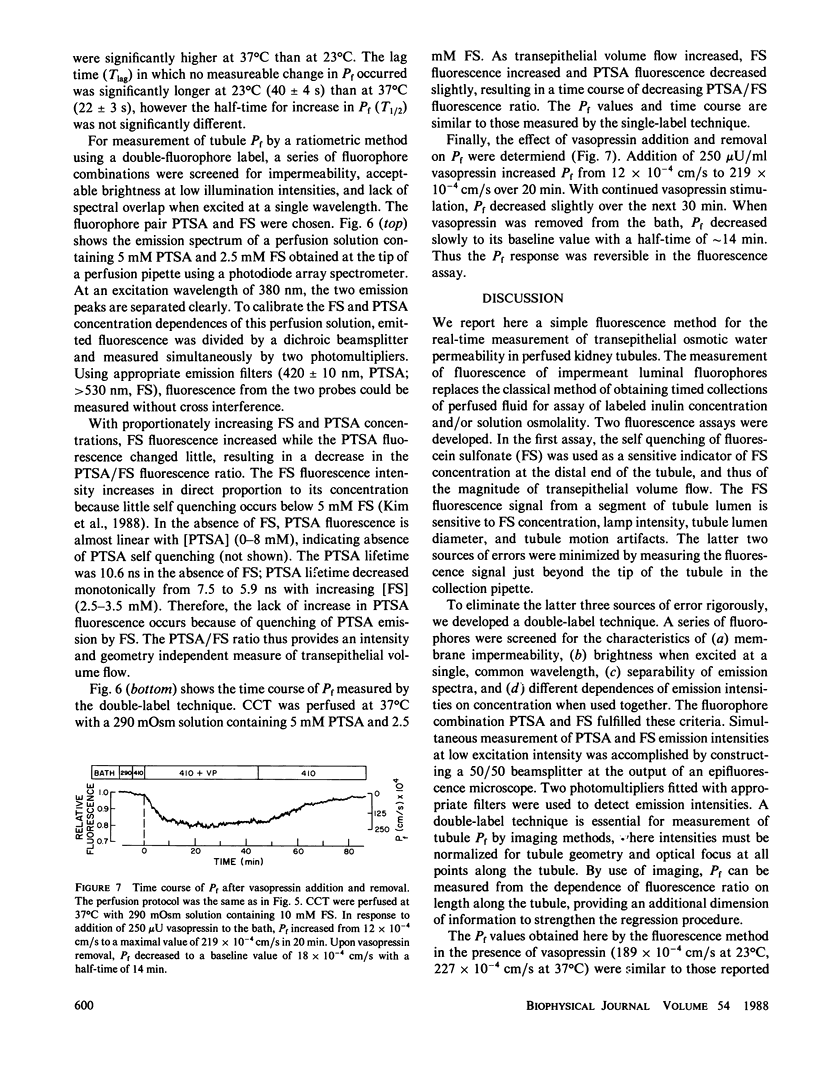
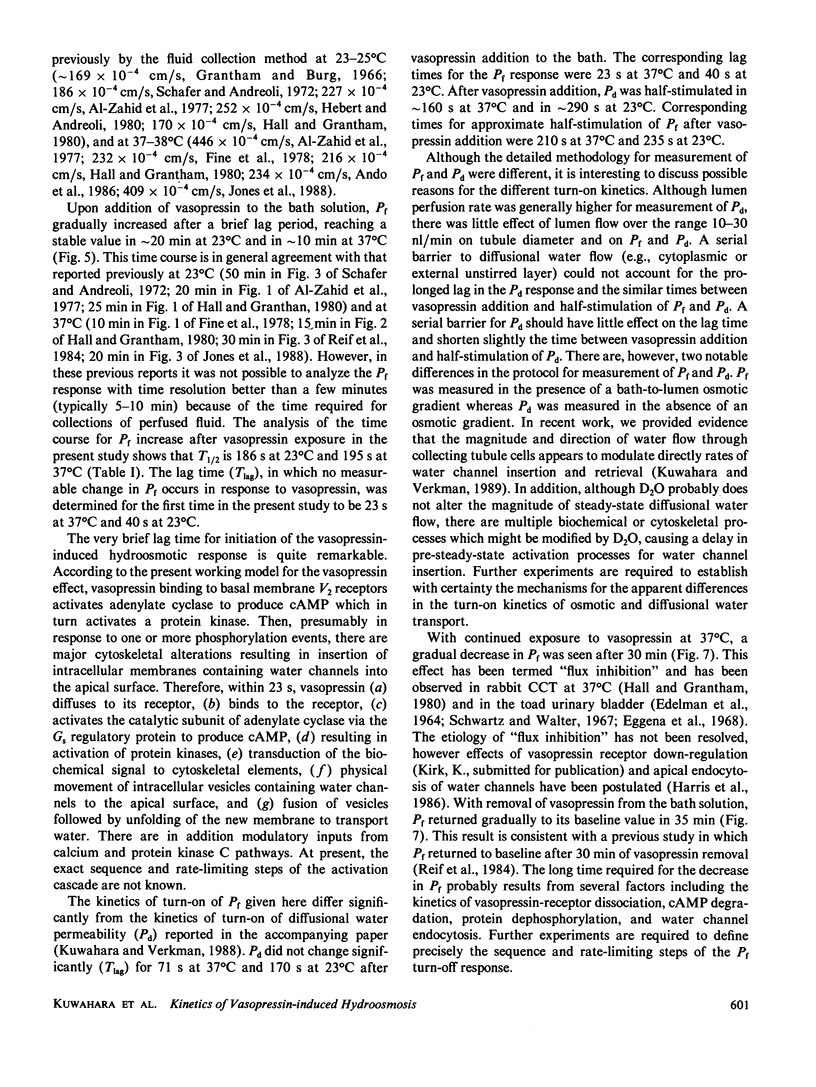
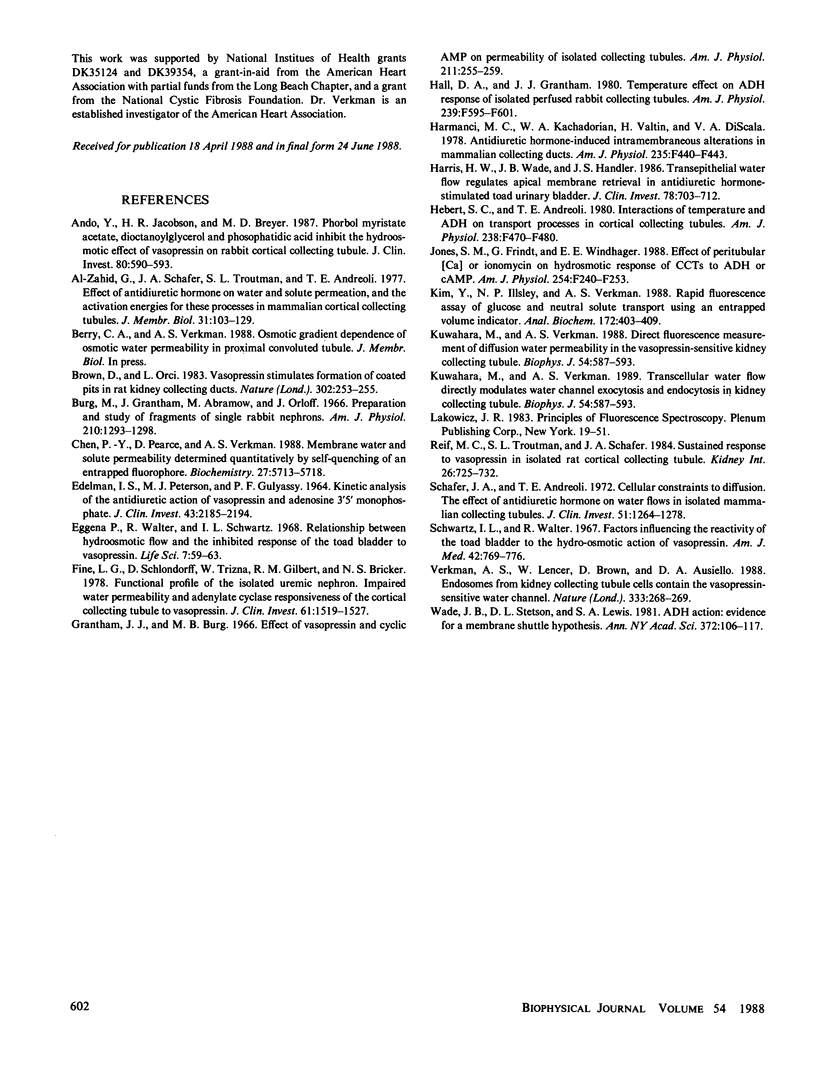
Images in this article
Selected References
These references are in PubMed. This may not be the complete list of references from this article.
- Al-Zahid G., Schafer J. A., Troutman S. L., Andreoli T. E. Effect of antidiuretic hormone on water and solute permeation, and the activation energies for these processes, in mammalian cortical collecting tubules: evidence for parallel ADH-sensitive pathways for water and solute diffusion in luminal plasma membranes. J Membr Biol. 1977 Feb 24;31(1-2):103–129. doi: 10.1007/BF01869401. [DOI] [PubMed] [Google Scholar]
- Ando Y., Jacobson H. R., Breyer M. D. Phorbol myristate acetate, dioctanoylglycerol, and phosphatidic acid inhibit the hydroosmotic effect of vasopressin on rabbit cortical collecting tubule. J Clin Invest. 1987 Aug;80(2):590–593. doi: 10.1172/JCI113110. [DOI] [PMC free article] [PubMed] [Google Scholar]
- Brown D., Orci L. Vasopressin stimulates formation of coated pits in rat kidney collecting ducts. Nature. 1983 Mar 17;302(5905):253–255. doi: 10.1038/302253a0. [DOI] [PubMed] [Google Scholar]
- Burg M., Grantham J., Abramow M., Orloff J. Preparation and study of fragments of single rabbit nephrons. Am J Physiol. 1966 Jun;210(6):1293–1298. doi: 10.1152/ajplegacy.1966.210.6.1293. [DOI] [PubMed] [Google Scholar]
- Chen P. Y., Pearce D., Verkman A. S. Membrane water and solute permeability determined quantitatively by self-quenching of an entrapped fluorophore. Biochemistry. 1988 Jul 26;27(15):5713–5718. doi: 10.1021/bi00415a048. [DOI] [PubMed] [Google Scholar]
- EDELMAN I. S., PETERSEN M. J., GULYASSY P. F. KINETIC ANALYSIS OF THE ANTIDIURETIC ACTION OF VASOPRESSIN AND ADENOSINE-3',5'-MONOPHOSPHATE. J Clin Invest. 1964 Nov;43:2185–2194. doi: 10.1172/JCI105092. [DOI] [PMC free article] [PubMed] [Google Scholar]
- Eggena P., Walter R., Schwartz I. L. Relationship between hydro-osmotic flow and the inhibited response of the toad bladder to vasopressin. Life Sci. 1968 Jan 1;7(1):59–63. doi: 10.1016/0024-3205(68)90361-5. [DOI] [PubMed] [Google Scholar]
- Fine L. G., Schlondorff D., Trizna W., Gilbert R. M., Bricker N. S. Functional profile of the isolated uremic nephron. Impaired water permeability and adenylate cyclase responsiveness of the cortical collecting tubule to vasopressin. J Clin Invest. 1978 Jun;61(6):1519–1527. doi: 10.1172/JCI109072. [DOI] [PMC free article] [PubMed] [Google Scholar]
- Grantham J. J., Burg M. B. Effect of vasopressin and cyclic AMP on permeability of isolated collecting tubules. Am J Physiol. 1966 Jul;211(1):255–259. doi: 10.1152/ajplegacy.1966.211.1.255. [DOI] [PubMed] [Google Scholar]
- Hall D. A., Grantham J. J. Temperature effect on ADH response of isolated perfused rabbit collecting tubules. Am J Physiol. 1980 Dec;239(6):F595–F601. doi: 10.1152/ajprenal.1980.239.6.F595. [DOI] [PubMed] [Google Scholar]
- Harris H. W., Jr, Wade J. B., Handler J. S. Transepithelial water flow regulates apical membrane retrieval in antidiuretic hormone-stimulated toad urinary bladder. J Clin Invest. 1986 Sep;78(3):703–712. doi: 10.1172/JCI112630. [DOI] [PMC free article] [PubMed] [Google Scholar]
- Hebert S. C., Andreoli T. E. Interactions of temperature and ADH on transport processes in cortical collecting tubules. Am J Physiol. 1980 Jun;238(6):F470–F480. doi: 10.1152/ajprenal.1980.238.6.F470. [DOI] [PubMed] [Google Scholar]
- Jones S. M., Frindt G., Windhager E. E. Effect of peritubular [Ca] or ionomycin on hydrosmotic response of CCTs to ADH or cAMP. Am J Physiol. 1988 Feb;254(2 Pt 2):F240–F253. doi: 10.1152/ajprenal.1988.254.2.F240. [DOI] [PubMed] [Google Scholar]
- Kim Y. K., Illsley N. P., Verkman A. S. Rapid fluorescence assay of glucose and neutral solute transport using an entrapped volume indicator. Anal Biochem. 1988 Aug 1;172(2):403–409. doi: 10.1016/0003-2697(88)90462-9. [DOI] [PubMed] [Google Scholar]
- Kuwahara M., Verkman A. S. Direct fluorescence measurement of diffusional water permeability in the vasopressin-sensitive kidney collecting tubule. Biophys J. 1988 Oct;54(4):587–593. doi: 10.1016/S0006-3495(88)82993-X. [DOI] [PMC free article] [PubMed] [Google Scholar]
- Kuwahara M., Verkman A. S. Direct fluorescence measurement of diffusional water permeability in the vasopressin-sensitive kidney collecting tubule. Biophys J. 1988 Oct;54(4):587–593. doi: 10.1016/S0006-3495(88)82993-X. [DOI] [PMC free article] [PubMed] [Google Scholar]
- Reif M. C., Troutman S. L., Schafer J. A. Sustained response to vasopressin in isolated rat cortical collecting tubule. Kidney Int. 1984 Nov;26(5):725–732. doi: 10.1038/ki.1984.208. [DOI] [PubMed] [Google Scholar]
- Schafer J. A., Andreoli T. E. Cellular constraints to diffusion. The effect of antidiuretic hormone on water flows in isolated mammalian collecting tubules. J Clin Invest. 1972 May;51(5):1264–1278. doi: 10.1172/JCI106921. [DOI] [PMC free article] [PubMed] [Google Scholar]
- Schwartz I. L., Walter R. Factors influencing the reactivity of the toad bladder to the hydro-osmotic action of vasopressin. Am J Med. 1967 May;42(5):769–776. doi: 10.1016/0002-9343(67)90094-0. [DOI] [PubMed] [Google Scholar]
- Verkman A. S., Lencer W. I., Brown D., Ausiello D. A. Endosomes from kidney collecting tubule cells contain the vasopressin-sensitive water channel. Nature. 1988 May 19;333(6170):268–269. doi: 10.1038/333268a0. [DOI] [PubMed] [Google Scholar]
- Wade J. B., Stetson D. L., Lewis S. A. ADH action: evidence for a membrane shuttle mechanism. Ann N Y Acad Sci. 1981;372:106–117. doi: 10.1111/j.1749-6632.1981.tb15464.x. [DOI] [PubMed] [Google Scholar]



